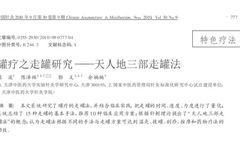Free updates on self-care methods in Traditional Chinese Medicine every night at 9 PM
Massage, acupressure, hand diagnosis, facial diagnosis, cupping, acupoints, meridians, moxibustion, gua sha, navel diagnosis, mouth diagnosis, tapping, and muscle manipulation can all provide corresponding learning materials and video tutorials.
Any acupoint name can be queried for detailed information
Cupping therapy is a commonly used method in TCM therapy clinics. Many people believe that cupping is only effective for expelling wind and cold, and is merely a health maintenance technique that cannot treat serious illnesses. However, if you master the essence of cupping, it can treat many difficult and complicated diseases. For example, using cupping to reposition a herniated disc requires an understanding of anatomy and skilled techniques to achieve good results. If you understand some tips about cupping, even without knowledge of anatomy, you can achieve automatic repositioning of a herniated disc within a minute through cupping, which is safer and more convenient than manual adjustment.
Today, we will not discuss how to reposition using cupping; instead, we will focus on how to perform cupping without pain.
When it comes to cupping therapy, very few practitioners are unfamiliar with it, even those who have not systematically studied medicine can perform it. Yes, I used to think so too.
However, for many who have experienced it, cupping can be an uncomfortable and painful experience. In clinical practice, I sometimes use the “cupping therapy,” but how can we perform cupping effectively and painlessly, making it more acceptable for patients? I had not given this much thought before.
Recently, I read an article that greatly benefited me and provided inspiration. This article, shown in the screenshot below, taught me how to perform painless cupping and how to quickly use painless cupping for weight loss, as well as how to easily address male and female reproductive health issues with painless cupping.
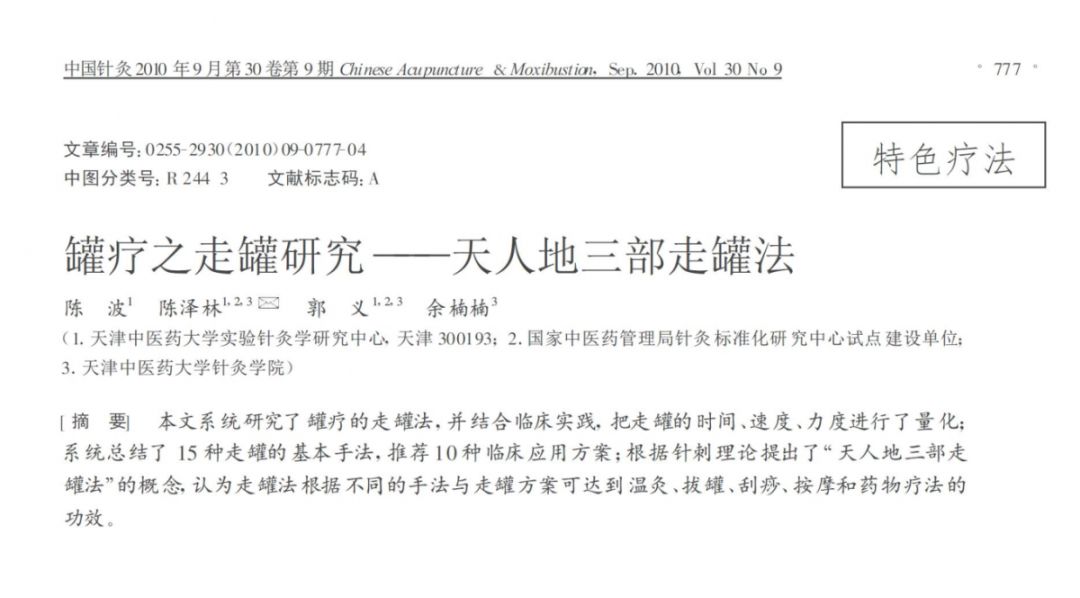
How can cupping be performed without pain?
Cupping, in simple terms, involves using negative pressure to attach the cup to specific areas of the body and moving it back and forth. If the negative pressure is too strong at the beginning, the suction will be too tight, causing noticeable pain during movement. After all, everyone has different pain tolerances; some find the suction enjoyable, while others find it unbearable. The WeChat public account on meridian techniques suggests that cupping should ideally be performed in three steps: “Heaven, Man, Earth,” which refers to shallow, medium, and deep. The first step is to start with shallow cupping, which can test the patient’s pain tolerance and allow first-time cupping patients to relax.
Then, perform shallow cupping, which can also serve a diagnostic purpose. In TCM, it is believed that a good practitioner first treats the skin and hair, and shallow cupping can achieve this initial treatment. Treating the skin and hair is crucial; why? Please refer to the following attached text: Why must we treat the skin and hair first when treating diseases?
^1 Observe the color of the marks, red indicates a new or hot disease, while dark purple indicates a chronic disease, cold syndrome, or blood stasis;
^2 Observe the shape of the marks, if they are scattered and light in color, it indicates a mild and short illness. If there are many marks that are large and dark, it indicates a long-standing illness with deeper pathogenic factors;
^3 Observe the location of the marks, marks on the upper body indicate upper burner issues, marks in the middle indicate middle burner problems, and marks on the lower back indicate lower burner diseases;
^4 By sliding the cup, one can also feel the tension of the muscle fascia. If the fascia feels soft and weak, cupping should not be performed for too long or too heavily. If the fascia is very tense, it indicates a solid condition, which is more suitable for cupping.
After completing the shallow cupping, proceed to the medium layer, and finally to the deep layer. This sequence can minimize discomfort from cupping while also providing diagnostic benefits and enhancing therapeutic effects by unblocking the fascia, qi, and blood in the meridians. If the suction is too tight from the start, much useful diagnostic information may be hidden, leading to a mechanical approach that lacks depth.
Does cupping have tonifying and draining effects? Can weak individuals undergo cupping?
Common knowledge suggests that cupping is primarily a draining method, and it is best for weak individuals to avoid it. However, cupping therapy can indeed have both tonifying and draining effects, and the principles of tonification and draining are similar to acupuncture: “Pushing in is tonifying, moving out is draining.”
In simple terms, light suction and gentle movements with slow pressure during cupping are considered “tonifying methods,” while tight suction, quick movements, and upward pulling during cupping are considered “draining methods.”
Therefore, for weak individuals experiencing shoulder and back pain who need cupping to alleviate discomfort, the tonifying principles of cupping can still be applied. However, this is only a temporary solution; afterwards, it is necessary to use herbal medicine, moxibustion, hot baths, or warming acupuncture to strengthen the foundation.
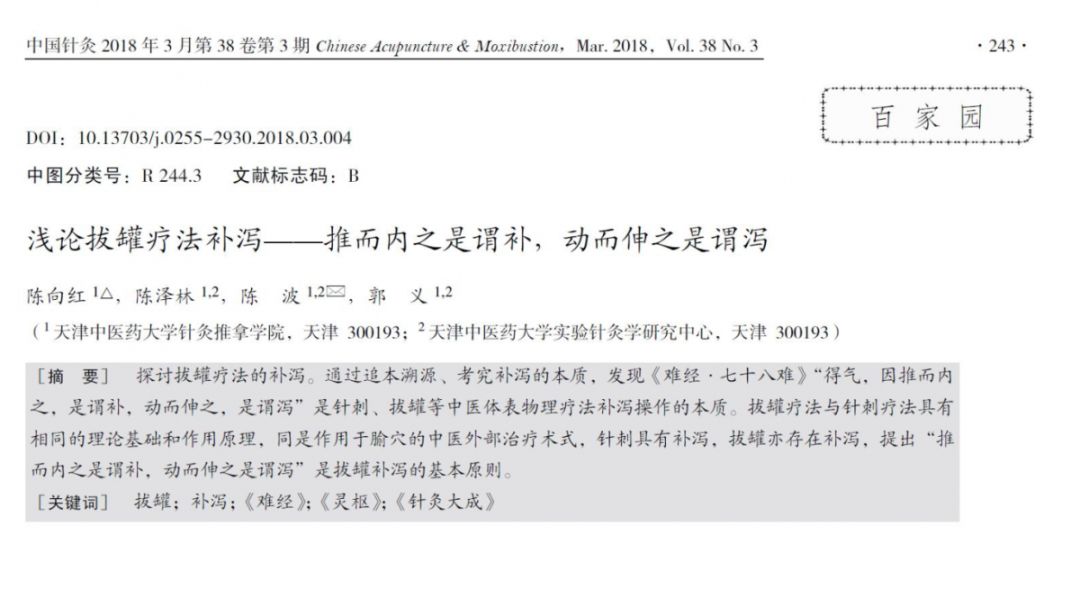
Appendix: Why must we treat the skin and hair first when treating diseases?
Because external pathogens invade the body in a sequence from the surface to the interior, from shallow to deep: skin and hair – muscles and fascia – meridians – organs – bone marrow. The skin and hair, muscles and fascia, and meridians are considered external, while the organs and bone marrow belong to the internal.
The level of the pathogenic factor determines the type of medication used; one must not exceed the level of the disease and draw the pathogen inward.
For example, in skin diseases, the pathogen resides in the skin and fascia, while the internal organs may also be affected. If the pathogen is in the skin and fascia, one should not use medications that penetrate to the internal organs, as this would draw the pathogen inward. Especially in cases of internal injury and external pathogens, the distinction between exterior and interior must be clear (in terms of efficacy and speed).
Therefore, when treating diseases, one must first clarify the location of the disease, and to clarify the location, one must understand the concepts of exterior and interior, yin and yang, deficiency and excess, cold and heat.When pathogens invade the body at different levels, the medication used must not exceed the disease’s location. For instance, when external pathogens invade the skin and fascia, we would use some warm or cool wind-dispelling herbs to relieve the exterior and then stop. If we were to use Bai Zhu (Atractylodes) or Fu Ling (Poria), not only would we fail to expel the pathogen, but we would also draw it into the internal organs.Famous TCM practitioner Sun Man’s teacher taught students that when treating diseases, it is essential to understand the concepts of exterior and interior. If one cannot distinguish between the two, a simple treatment to relieve heat and dispel the exterior could be resolved with just one or two doses of medicine, but instead, using Bai Zhu or Fu Ling, thinking they are safe, would draw the pathogen from the surface into the body. This would turn the body into a battlefield, leading to multiple complications and prolonging the treatment time.Thus, Sun’s teacher emphasized the importance of distinguishing between exterior and interior when treating diseases, just as philosophers have said that the most basic concepts in any discipline are often the most important and critical. In TCM, the most fundamental concepts are: “exterior and interior, yin and yang, deficiency and excess, cold and heat.”The Huangdi Neijing states, “A good practitioner treats the skin and hair.” Treating exterior symptoms is crucial, as pathogens can enter and exit through this route. It is not only external diseases that have exterior symptoms; various internal injuries and miscellaneous diseases also exhibit exterior symptoms.Sun’s teacher said that treating diseases does not mean that one must use wind-dispelling herbs only for external diseases; they can also be used for internal injuries and miscellaneous diseases to gradually expel pathogens from the body. Therefore, using wind-dispelling herbs for diseases located in the muscles and skin is common, but Sun’s teacher has also used them for many internal diseases with considerable success. For example, Sun’s teacher mentioned the use of the reverse flow method in Yuyicai to apply the idea of using Baidu San (Dispersing Toxin Powder), which is quite brilliant. When treating diarrhea, the wind-dispelling herbs are used because diarrhea occurs when the spleen and stomach’s ascending qi is disrupted, leading to the clear qi being suppressed below, resulting in diarrhea. This is what the Huangdi Neijing teaches us. Why do patients experience diarrhea? It is because the clear yang is suppressed by the turbid yin below, preventing it from ascending. When wind-dispelling herbs are applied, the stool immediately becomes formed, and bowel movements return to normal. This is a typical example of using wind-dispelling herbs to treat internal organ conditions.Why does Sun’s teacher have a particular fondness for wind-dispelling herbs?Once, when his half-year-old child had diarrhea for half a month and could not sit still, he tried commonly used formulas like Shen Ling Bai Zhu San (Ginseng and Atractylodes Powder) and others, but nothing worked. Even using Li Zhong Tang (Regulating the Middle Decoction) was ineffective. At that point, Sun’s teacher opened Li Dongyuan’s On Spleen and Stomach and found that the treatments for diarrhea were all wind-dispelling herbs. He then used Qiang Huo (Notopterygium), Du Huo (Angelica pubescens), Fang Feng (Siler), and Jing Jie (Schizonepeta), along with licorice, and gave it to the child. The next day, the diarrhea stopped. Later, when he encountered similar diseases that were difficult to treat, he had to refer back to the classics for guidance.For instance, when treating chronic abdominal pain, he used herbs to strengthen the spleen, promote qi, and warm the kidneys, but they did not work. Eventually, he resorted to Li Dongyuan’s wind-dispelling herbs, and one dose resolved the issue. Additionally, for patients with chest pain, conventional treatments for chest obstruction were ineffective, but ultimately, wind-dispelling herbs cured them.Whenever conventional methods failed to yield results, Sun’s teacher found unexpected success with wind-dispelling herbs. He kept many examples of successful treatments with wind-dispelling herbs in mind, always questioning and seeking answers, and ultimately, he became increasingly adept at using wind-dispelling herbs in clinical practice. This is what is meant by advancing with the disease and retreating with the heart…In summary, treating the skin and hair is very important. For those interested in the significance of the skin and hair, please refer to the following: The Theory of Skin and Hair
The Theory of Skin and Hair
The skin is the primary point for disease diagnosis, as the most direct indicators are changes in color and shape. Therefore, the first of the four examinations is observation. To know by observation is called the highest skill. The Huangdi Neijing states, “Therefore, the disease caused by wind should be treated as swiftly as the wind and rain; thus, a good practitioner treats the skin and hair first. Next, treat the muscles and skin, then the tendons and vessels, then the six fu organs, and finally the five zang organs.”
In other words, the highest skill saves the budding disease and treats the unillness. The WeChat public account on meridian techniques suggests that treatment should begin as soon as a disease starts, which saves money and avoids suffering. However, in reality, people often wait until they can no longer endure the pain before seeking treatment. Mild cases may enter the meridians, while severe cases may penetrate deeper into the vessels or even the organs, but it should also be noted that many diseases are iatrogenic (caused by medical treatment). (For example, cervical spondylosis, where patients have been massaged in clinics and hospitals for three to five years but still experience relapses, and they are told that this is just how it is.) Therefore, the beginning of all diseases must first relate to the skin and hair. The skin and hair are important pathways for external pathogens to invade the body, but relatively speaking, they are both the entry and exit points for pathogens. Opening the door to thieves can be considered a good strategy.
In Zhang Zhongjing’s Shanghan Lun, the six meridians originate from the pathogen in the Taiyang (Greater Yang) channel, which is also on the surface. Regardless of whether the disease begins at the surface, many formulas start with relieving the exterior.
Thus, the treatment of many stubborn diseases, whether through meridian transmission or beyond, ultimately aims to expel the trapped pathogens from the surface, returning to the Taiyang channel, relieving the exterior, and achieving recovery. As the saying goes: “When the pathogen is trapped inside, even if it has been there for a hundred days, it should still be drawn out from the surface; otherwise, it will not die or rest.”
Note:Doctors regard practicing medicine and saving lives as their responsibility, but the legendary physician Bian Que had six types of people he would not treat! Who are these six types of people? Please refer to today’s seventh article: Bian Que’s “Six Non-Treatments”!Warm reminder: The various prescriptions and remedies mentioned in this article are for reference and learning by professional TCM practitioners only and should not be used as prescriptions. Please do not self-medicate, as this platform does not bear any responsibility for any consequences arising from this.This article is sourced from the internet; if there is any infringement, please contact us for removal.
Customer service WeChat ID:jingluojiqiao88
Long press the QR code to recognize and follow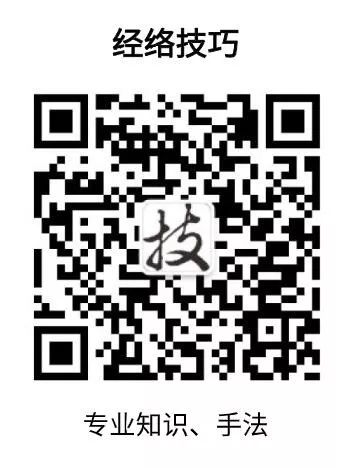
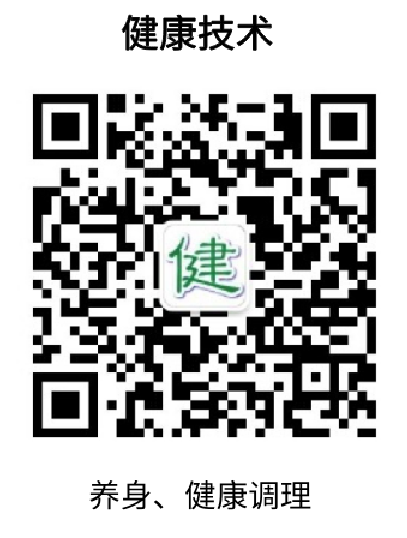
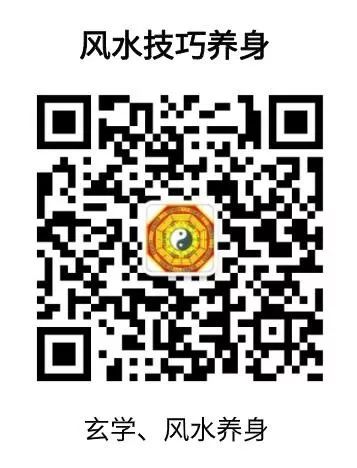
Click Read the original text to see:This disease is scarier than cancer and AIDS! Many people do not take it seriously.

